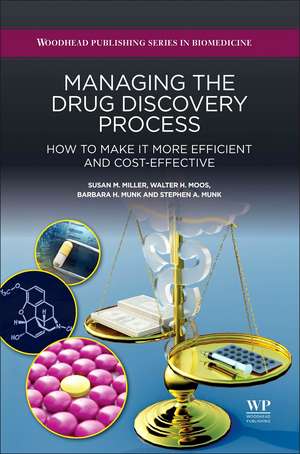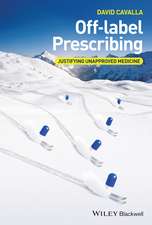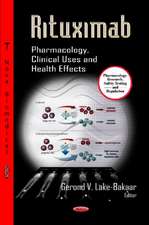Managing the Drug Discovery Process: How to Make It More Efficient and Cost-Effective
Autor Susan Miller, Walter Moos, Barbara Munk, Stephen Munken Limba Engleză Hardback – 21 noi 2016
This book takes a closer look at increasing pre-approval costs for new drugs and examines not only why these increases occur, but also how they can be overcome to ensure a robust pharmacoeconomic future. Written in an engaging manner and including memorable insights, this book is aimed at redirecting the drug discovery process to make it more efficient and cost-effective in order to achieve the goal of saving countless more lives through science. A valuable and compelling resource, this is a must-read for all students and researchers in academia and the pharmaceutical industry.
- Considers drug discovery in multiple R&D venues, including big pharma, large biotech, start-up ventures, academia, and nonprofit research institutes
- Analyzes the organization of pharmaceutical R&D, taking into account human resources considerations like recruitment and configuration, management of discovery and development processes, and the coordination of internal research within, and beyond, the organization, including outsourced work
- Presents a consistent, well-connected, and logical dialogue that readers will find both comprehensive and approachable
Preț: 1517.29 lei
Preț vechi: 1597.14 lei
-5% Nou
Puncte Express: 2276
Preț estimativ în valută:
290.33€ • 303.13$ • 240.29£
290.33€ • 303.13$ • 240.29£
Carte tipărită la comandă
Livrare economică 05-19 aprilie
Preluare comenzi: 021 569.72.76
Specificații
ISBN-13: 9780081006252
ISBN-10: 008100625X
Pagini: 536
Dimensiuni: 152 x 229 x 26 mm
Greutate: 1 kg
Editura: ELSEVIER SCIENCE
ISBN-10: 008100625X
Pagini: 536
Dimensiuni: 152 x 229 x 26 mm
Greutate: 1 kg
Editura: ELSEVIER SCIENCE
Public țintă
Researchers and postgraduate students in academia and the pharmaceutical industryCuprins
Section A: Introduction and Overview
1: Backgrounder: Medicinal chemistry: Research, discovery, art, science
Section B: Preprofessional Education
2: Introduction: Preprofessional education
3: Two-year certification and degree programs
4: Four-year undergraduate degree programs
5: The big decision
Section C: Graduate and Professional Education
6: Graduate and postgraduate education at a crossroads
7: Master’s degree programs
8: Doctoral and professional programs
9: The big leap
Section D: Research and Discovery
10: Drug discovery: Chaos can be your friend or your enemy
11: Drug discovery: Standing on the shoulders of giants
12: Research and discovery: The difficult we do immediately—The impossible takes only a little longer
Section E: Chemical Development, Quality Requirements, and Regulatory Affairs
13: Turning a potent agent into a registered product
14: Chemical development: Synthetic studies and engineering aspects
15: Chemical development: Analytical studies
16: FDA path and process: Sponsor‘s regulatory tasks for drug approval
Section F: Pharmaceutical Research and Development: Concluding Remarks
17: Epilogue
1: Backgrounder: Medicinal chemistry: Research, discovery, art, science
Section B: Preprofessional Education
2: Introduction: Preprofessional education
3: Two-year certification and degree programs
4: Four-year undergraduate degree programs
5: The big decision
Section C: Graduate and Professional Education
6: Graduate and postgraduate education at a crossroads
7: Master’s degree programs
8: Doctoral and professional programs
9: The big leap
Section D: Research and Discovery
10: Drug discovery: Chaos can be your friend or your enemy
11: Drug discovery: Standing on the shoulders of giants
12: Research and discovery: The difficult we do immediately—The impossible takes only a little longer
Section E: Chemical Development, Quality Requirements, and Regulatory Affairs
13: Turning a potent agent into a registered product
14: Chemical development: Synthetic studies and engineering aspects
15: Chemical development: Analytical studies
16: FDA path and process: Sponsor‘s regulatory tasks for drug approval
Section F: Pharmaceutical Research and Development: Concluding Remarks
17: Epilogue









